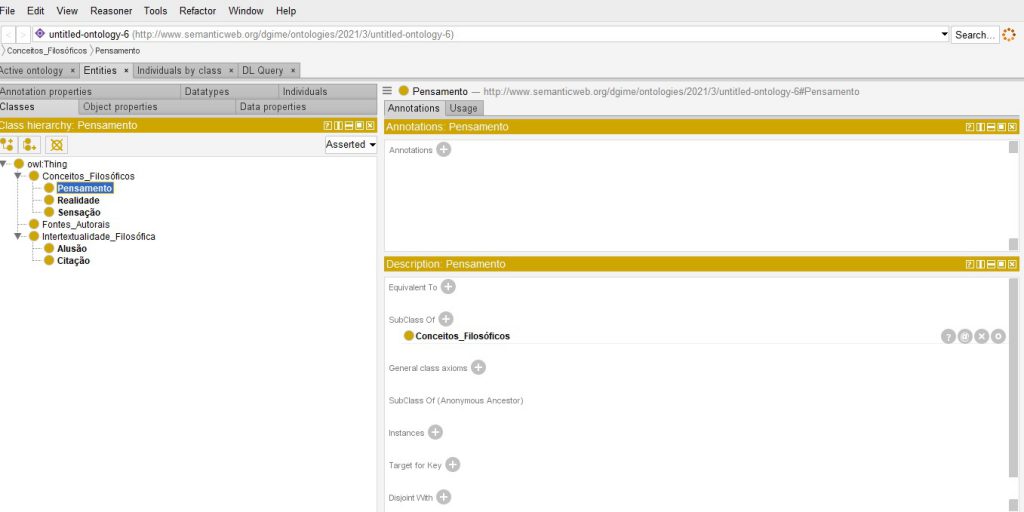A Philosophical Ontology for the LdoD Archive
Based on the definition of ontology used by the team at The Wittgenstein Archives (http://wab.uib.no/) at the University of Bergen (2013), that is, considering an ontology as a model that organizes information and as a formal and explicit specification of a shared conceptualization (Zöllner-Weber and Gruber quoted in Pichler and Zölner-Weber, 2013: 700), the project of creating a Philosophical Ontology for the LdoD Archive (https://ldod.uc.pt/) aims to define an ontology for Pessoa’s work focusing on the relationships between philosophical concepts or taxonomies.
Fernando Pessoa was a great reader of Philosophy. Abstract thinking is present in the entire work of the writer, either through quotes from philosophers and philosophies, or through the articulation of philosophical concepts or themes. The
The aim of the Philosophical Ontology for the LdoD Archive is to define, formalize, and make explicit the hierarchy and relationships between philosophical taxonomies. The project is part of the postdoctoral research “The philosophical and critical dimension of the
In what concerns the intertextual relations present in the Book of Disquiet, a virtual edition was made in the LdoD Archive, which can be accessed at https://ldod.uc.pt/edition/acronym/LdoD-InterFil. The initial results of this first stage of the research were presented at the Casa Fernando Pessoa colloquium on New Studies on Pessoa, in 2020, and they are published in the proceedings – https://casafernandopessoa.pt/download_file/342/0.
With regard to the articulation of philosophical concepts or taxonomies, the question is: how is philosophical thought structured in the Book of Disquiet as a text? At first, the analysis will focus on a series of philosophical concepts derived from experts in the philosophical dimension of Pessoa’s work, such as José Gil and António Pina Coelho: sensation, reality, and thought. The intention is to map, through an Ontology, the hierarchical relationships between these taxonomies.
A survey of textual fragments in which these concepts/words are referred to in the Book of Disquiet has been carried out. With this material, experiments with the structuring of classes and subclasses have been attempted using the protegé software (Fig. 1), an

References
Pessoa, Fernando (2017). Livro do Desassossego, in Manuel Portela & António Rito Silva, eds., Arquivo LdoD, Coimbra: Centro de Literatura Portuguesa da Universidade de Coimbra. https://ldod.uc.pt/
Pichler, Alois & Zölner-Weber, Amélie. (2013). “Sharing and debating Wittgenstein by using an ontology”, Literary and Linguistic Computing, vol. 28, No. 4, pp. 700-707. DOI: 10.1093/llc/fqt049
